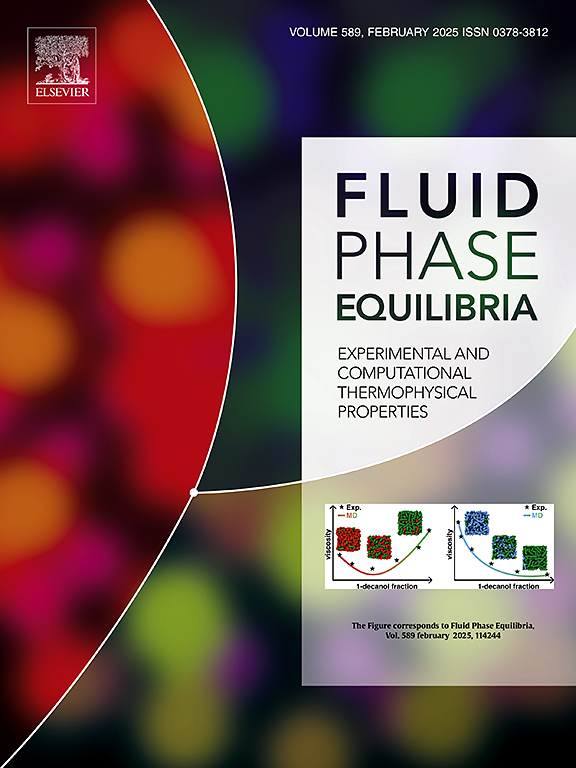A robust and efficient augmented free-water flash method for CO2-water-hydrocarbon mixtures
IF 2.8
3区 工程技术
Q3 CHEMISTRY, PHYSICAL
引用次数: 0
Abstract
Three-phase equilibrium calculations for water-CO2-hydrocarbon mixtures are required in the compositional simulation of various applications in CO2 storage, geothermal systems, and enhanced oil recovery. The very low solubility of hydrocarbon components in water leads to a special mathematical structure of the problem. Several techniques were suggested, such as the free-water flash (FWF) and the augmented free-water flash (AFWF); in the former, the aqueous phase is pure water, while in the latter only certain components, CO2 or methane for example, are dissolved in the aqueous phase. However, only the first-order successive substitution method was used in the previous published approaches, making them unattractive for compositional simulations in which a significant number of phase equilibrium calculations are performed. In this work, a robust and efficient AFWF method is proposed, using combined successive substitutions-modified Newton iterations. The new method is general, allowing partial solubility of any selected component in the water-rich phase, depending on the specific compositions and operating conditions. A detailed description of second-order methods in a Gibbs energy minimization framework for the general AFWF is presented. In the AFWF, the dimension of the problem and the number of function evaluations (thus the computation time) are significantly reduced. Moreover, it is shown that the augmented method always has better convergence properties than its conventional multiphase flash counterpart, in both first- and second-order methods. The new AFWF method is tested for various hydrocarbon-water-CO2 mixtures and proved to be robust and efficient, systematically outperforming the conventional approach. Unlike in previous AFWF formulations, the number of components soluble in water is not limited, leading to a controlled accuracy with respect to a full three-phase equilibrium, even at high pressures and/or large amounts of CO2.
求助全文
约1分钟内获得全文
求助全文
来源期刊

Fluid Phase Equilibria
工程技术-工程:化工
CiteScore
5.30
自引率
15.40%
发文量
223
审稿时长
53 days
期刊介绍:
Fluid Phase Equilibria publishes high-quality papers dealing with experimental, theoretical, and applied research related to equilibrium and transport properties of fluids, solids, and interfaces. Subjects of interest include physical/phase and chemical equilibria; equilibrium and nonequilibrium thermophysical properties; fundamental thermodynamic relations; and stability. The systems central to the journal include pure substances and mixtures of organic and inorganic materials, including polymers, biochemicals, and surfactants with sufficient characterization of composition and purity for the results to be reproduced. Alloys are of interest only when thermodynamic studies are included, purely material studies will not be considered. In all cases, authors are expected to provide physical or chemical interpretations of the results.
Experimental research can include measurements under all conditions of temperature, pressure, and composition, including critical and supercritical. Measurements are to be associated with systems and conditions of fundamental or applied interest, and may not be only a collection of routine data, such as physical property or solubility measurements at limited pressures and temperatures close to ambient, or surfactant studies focussed strictly on micellisation or micelle structure. Papers reporting common data must be accompanied by new physical insights and/or contemporary or new theory or techniques.
 求助内容:
求助内容: 应助结果提醒方式:
应助结果提醒方式:


